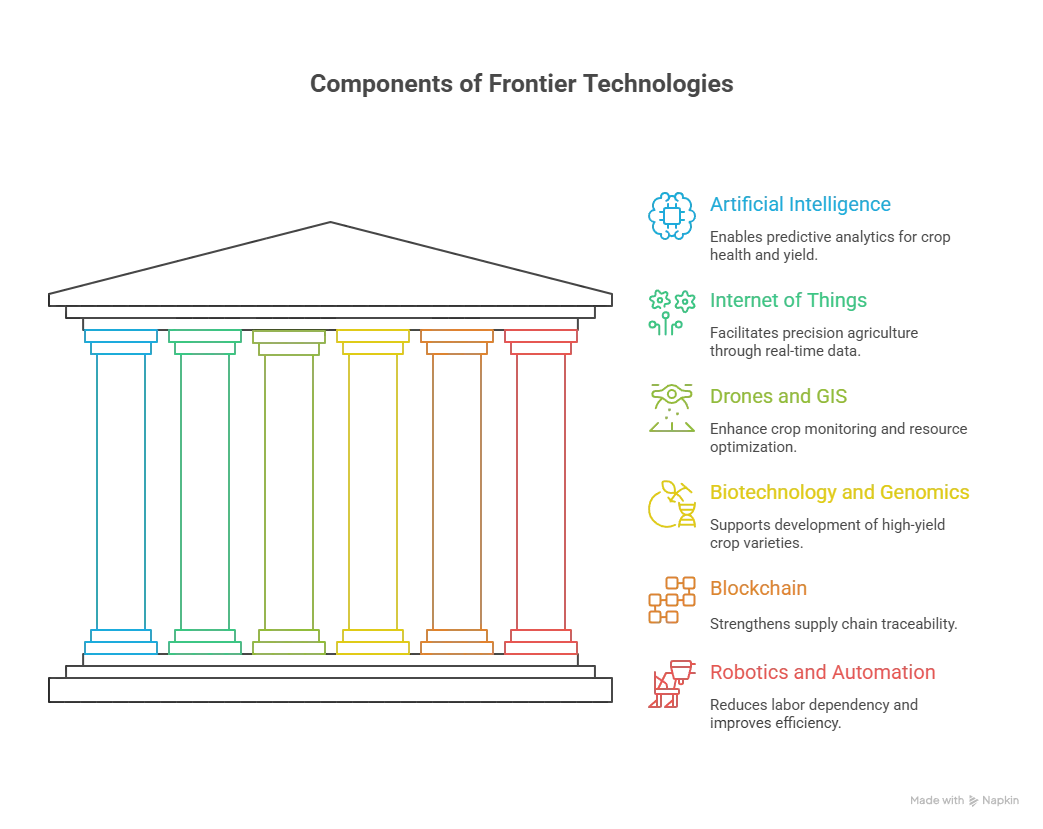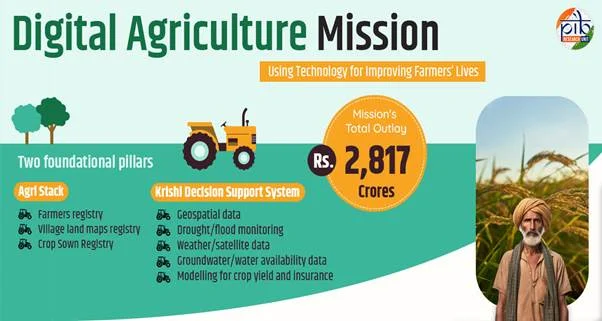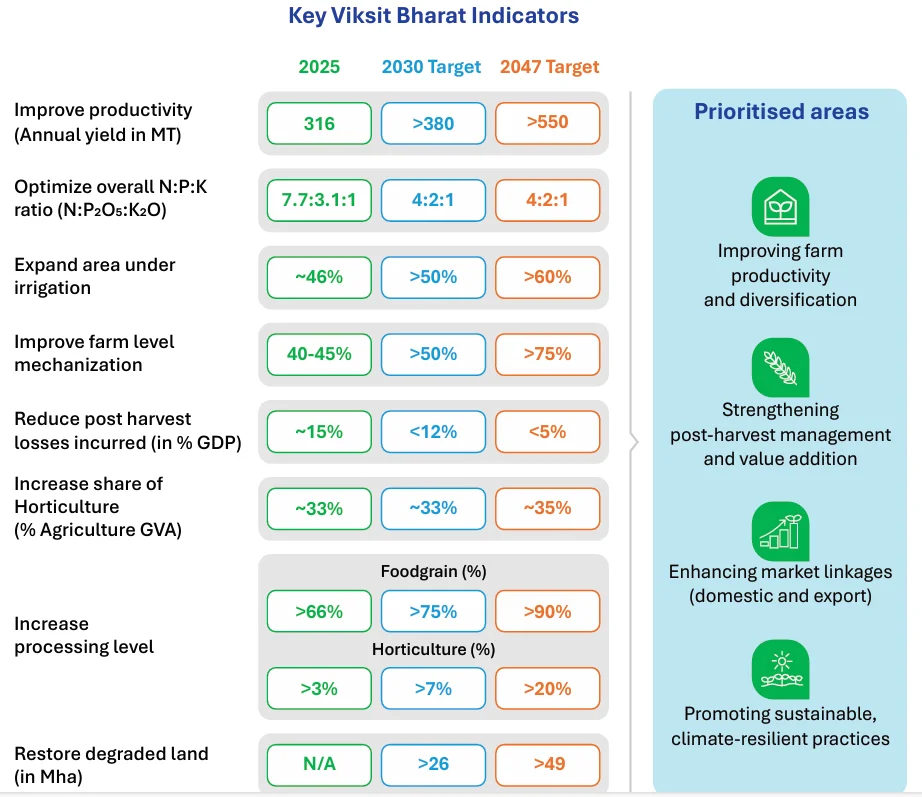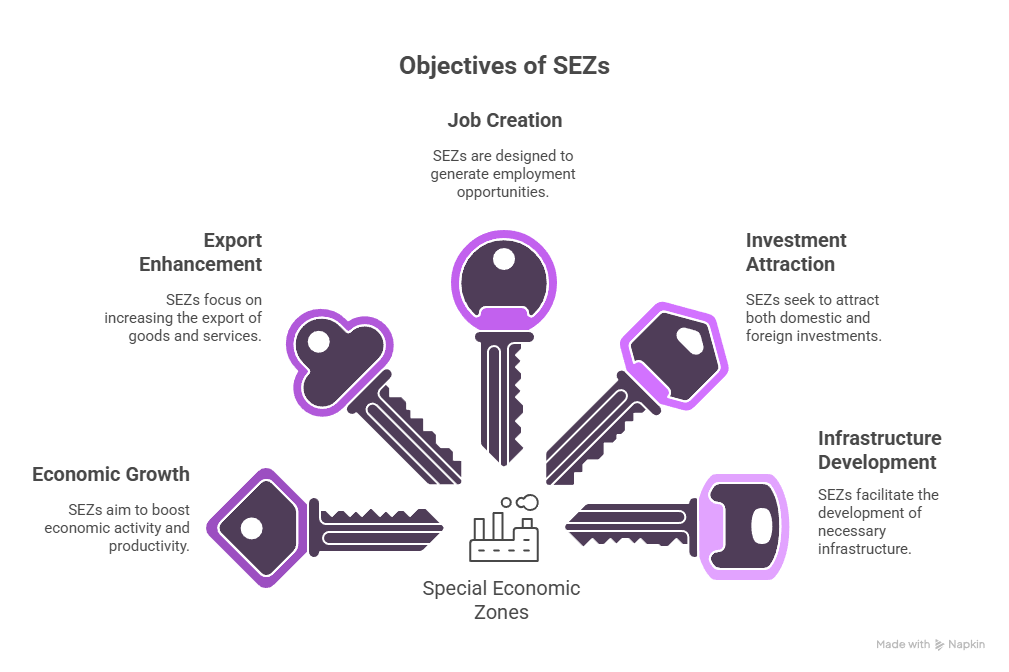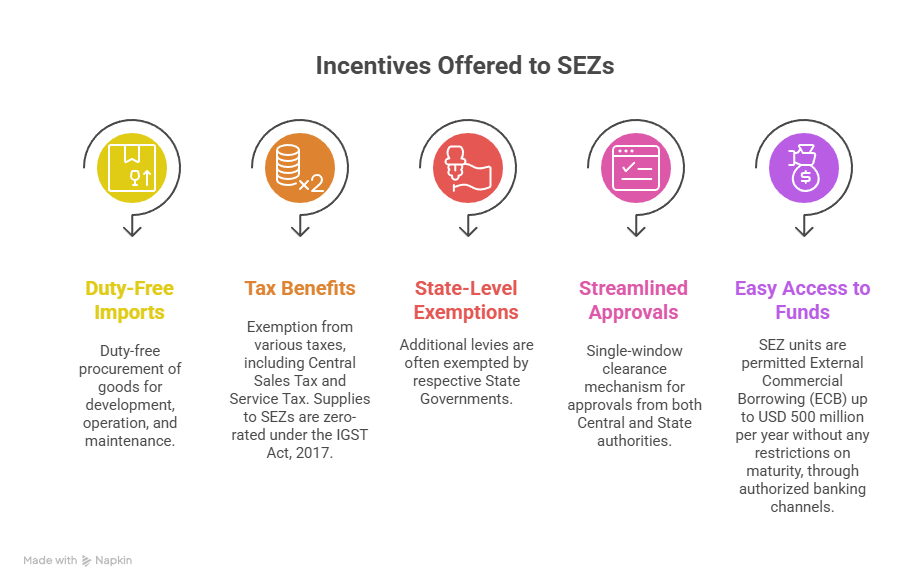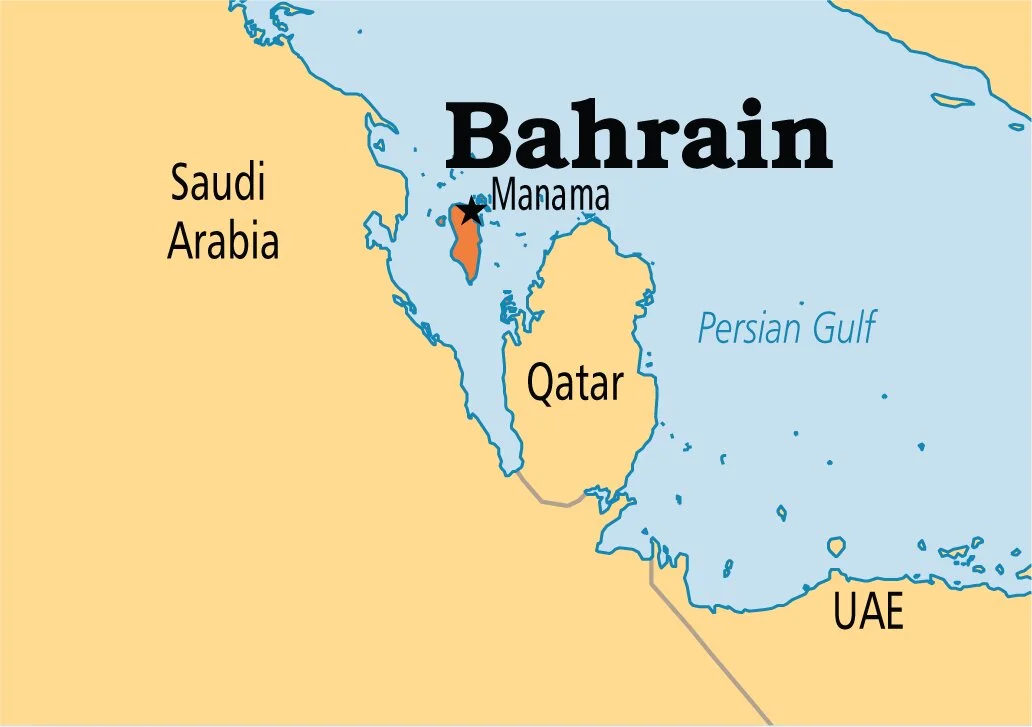BRICS Pay: A Bid to Reduce SWIFT Dependence
For Prelims: BRICS, SWIFT System, BRICS Pay, Unified Payments Interface, New Development Bank
For Mains: BRICS as a multipolar financial actor, De-dollarisation and its impacts on economy, BRICS Nations Explore Alternative Currencies
Why in News?
BRICS is seeking to reduce Western dominance in global financial architecture by developing BRICS Pay, a cross-border payments framework intended to reduce reliance on the US–led Society for Worldwide Interbank Financial Telecommunication (SWIFT) system.
What is BRICS Pay?
- Background for BRICS led Financial System: BRICS began pursuing financial autonomy at the 2014 Fortaleza Summit by creating the New Development Bank and the Contingent Reserve Arrangement.
- US and EU sanctions on Russia in 2015 pushed members to explore greater use of local currencies, leading to currency-swap and settlement cooperation by 2017.
- This effort culminated at the 2024 Kazan Summit with the launch of BRICS Pay to boost local-currency cross-border settlements and strengthen intra-BRICS banking networks.
- BRICS Pay: It is a proposed cross-border payment system to facilitate trade and financial transactions among BRICS member nations using local currencies, thereby reducing dependence on systems like SWIFT and the USD.
- It is part of the BRICS Cross-Border Payments Initiative, aimed at increasing financial sovereignty, economic cooperation, and resilience against sanctions.
- Interoperability: BRICS Pay envisions interoperability between national payment platforms, including:
- Russia’s System for Transfer of Financial Messages (SPFS) alternative to SWIFT.
- China’s Cross-Border Interbank Payment System (CIPS), which has participants in 120+ countries.
- India’s Unified Payments Interface (UPI), a digital payments platform, gaining global traction.
- Brazil’s Pix, a real-time payment system widely used across Latin America.
SWIFT
- Founded in 1973 and based in Belgium, SWIFT is a secure global messaging network used by over 11,500 institutions across more than 200 countries and territories to transmit instructions for international money transfers.
- It does not move money itself but provides standardised encrypted messages to facilitate payments.
- The National Bank of Belgium (NBB) acts as the lead overseer of Swift, and is supported by the G10 central banks.
- Each participating bank is assigned a unique SWIFT code that identifies its institution, country, and location, ensuring fast and reliable communication.
- India has access to the SWIFT system, which allows its financial institutions to send and receive secure messages for international and domestic transactions
Why is BRICS Challenging SWIFT?
- Desire for Financial Sovereignty: SWIFT, as a key global financial infrastructure, is heavily tied to the USD and it is controlled by the G10 nations, which limits BRICS countries' influence in global financial systems.
- A BRICS-led alternative would ensure that member states have a greater say in the rules governing international finance.
- Protection from US Sanctions: SWIFT has been used by the US and its allies to impose economic sanctions on countries like Russia and Iran, limiting BRICS ability to access global financial markets.
- Geopolitical Motivations and Diversification: Rising geopolitical tensions with the West, especially involving Russia and China, have pushed BRICS to reduce vulnerability to Western financial pressure.
- BRICS also aims to deepen South–South cooperation by boosting economic ties with developing countries in Africa, Latin America, and Asia through alternative payment systems.
- This creates a strategic imperative to build a financial system less reliant on Western institutions.
What are the Challenges in the Implementation of BRICS Pay?
- Competing National Payment Priorities: BRICS members are promoting their own systems (China’s CIPS, India’s UPI) which can create friction when deciding whose framework should lead.
- China’s economic weight and the wider reach of CIPS (120+ countries) may raise concerns that BRICS Pay could effectively become China-led, making others more cautious.
- Political Rivalries: Tensions between India and China, particularly over India's reluctance to adopt CIPS in favor of UPI, may hinder cooperation. These geopolitical differences must be resolved for BRICS Pay to succeed.
- Technical Interoperability: These platforms currently operate differently. Aligning infrastructure, messaging standards, security protocols, and settlement mechanisms is complex and resource-intensive.
- Lack of Coordinated Monetary Policy: A shared payment architecture requires longer-term coordination on capital flows, exchange rates, and liquidity management, an area where BRICS countries have divergent priorities.
- External pressure: Threats of retaliation from the US such as tariff warnings, could deter some members from fully committing.
- Trust Deficit: Countries outside the BRICS bloc may be reluctant to adopt BRICS Pay due to geopolitical concerns, fear of retaliation from the West, or unfamiliarity with the new system.
- For BRICS Pay to succeed globally, it will need to secure partners beyond BRICS and convince other countries of its security and benefits.
What Measures Could Accelerate the Adoption of a BRICS Pay?
- Strategic Roadmap: A phased strategic roadmap for BRICS Pay should start with bilateral local currency settlements, then evolve into a digital payment network, expanding through regional partnerships in Africa, Latin America, and Central Asia to boost adoption.
- Incentivizing Participation: Offering benefits like reduced transaction costs compared to SWIFT and faster payments to countries and institutions will encourage adoption of BRICS Pay.
- Strengthening Interoperability: Ensuring compatibility between national payment systems (CIPS, UPI, Pix, SPFS) is crucial for smooth cross-border transactions.
- Political Consensus and Cooperation: Overcoming geopolitical rivalries (e.g., India-China tensions) and aligning national interests will help create a unified approach.
Conclusion
BRICS' challenge to SWIFT aims for financial independence, protection from sanctions, and a more inclusive global financial system. Through initiatives like BRICS Pay and stronger cooperation between national payment systems, BRICS seeks to create a more equitable financial ecosystem.
Frequently Asked Questions (FAQs)
1. What is BRICS Pay?
A proposed cross-border payments system enabling local-currency settlements among BRICS members to reduce reliance on SWIFT and the USD.
2. Why is BRICS challenging SWIFT?
To gain financial sovereignty, sanctions resilience, and rule-setting power, while diversifying payment rails beyond Western-overseen infrastructure.
3. Which systems would interoperate under BRICS Pay?
Russia’s System for Transfer of Financial Messages (SPFS), China’s Cross-Border Interbank Payment System (CIPS), India’s Unified Payments Interface (UPI), and Brazil's Pix will be linked for instant, secure, low-cost cross-border transfers.
UPSC Civil Services Examination, Previous Year Questions (PYQs)
Prelims
Q. Consider the following statements: (2016)
- New Development Bank has been set up by APEC.
- The headquarters of the New Development Bank is in Shanghai.
Which of the statements given above is/are correct?
(a) 1 only
(b) 2 only
(c) Both 1 and 2
(d) Neither 1 nor 2
Ans: (b)
Q. The ‘Fortaleza Declaration’, recently in the news, is related to the affairs of (2015)
(a) ASEAN
(b) BRICS
(c) OECD
(d) WTO
Ans: (b)
Q. With reference to a grouping of countries known as BRICS, consider the following statements: (2014)
- The First Summit of BRICS was held in Rio de Janeiro in 2009.
- South Africa was the last to join the BRICS grouping.
Which of the statements given above is/are correct?
(a) 1 only
(b) 2 only
(c) Both 1 and 2
(d) Neither 1 nor 2
Ans: (b)
Mains
Q. How would the recent phenomena of protectionism and currency manipulations in world trade affect macroeconomic stability of India? (2018)
Reimagining Agriculture: A Roadmap for Frontier Technology
For Prelims: NITI Aayog, AI, IoT, Biotechnology, Digital Agriculture Mission, Digital Public Infrastructure (DPI), AgriStack, Krishi Decision Support System (DSS).
For Mains: Key Highlights of the Reimagining Agriculture Report, Frontier Technologies Needed in Agriculture, Roadblocks to Tech Adoption in Agriculture and Way Forward.
Why in News?
The NITI Aayog released the report “Reimagining Agriculture: Roadmap for Frontier Technology-Led Transformation,” highlighting how AI, IoT, drones, and biotechnology can transform Indian agriculture.
- The roadmap proposes Digital Agriculture Mission 2.0 with three pillars — Enhance, Reimagine, and Converge — to drive technology-led agricultural transformation.
What are the Frontier-led Technologies in Agriculture?
- About: It encompasses advanced technologies revolutionising food, fiber, and fuel production, advancing toward an intelligent and sustainable food system through climate-resilient seeds, digital twins, and precision tools.
- Objectives: It seeks to shift agriculture from input-intensive to innovation-driven, using digital and scientific tools to ensure food security, climate resilience, and diverse incomes for farmers.
- Components of Frontier Technologies:
- Farmers Category: To holistically implement frontier technologies, the report divides farmers into 3 archetypes:
- Aspiring Farmers (70–80%): Small, rain-fed farmers needing micro-irrigation, credit, and market access.
- Transitioning Farmers (15–20%): Medium, entrepreneurial farmers seeking machinery, buyer linkages, and storage solutions.
- Advanced Farmers (1–2%): Large, export-focused farmers requiring blockchain traceability, advanced seeds, and robotics for global competitiveness.
Digital Agriculture Mission (DAM)
- About: Digital Agriculture Mission (DAM) is an umbrella scheme aimed at integrating Information and Communication Technologies (ICT) and data ecosystems to make farming profitable, sustainable, and data-driven.
- It supports Digital Public Infrastructure (DPI), Digital General Crop Estimation Survey (DGCES), and other IT-based initiatives by Central and State Governments, as well as academic and research institutions.
- Mission Components: The mission is anchored on 2 foundational components:
- AgriStack (Farmer-Centric Digital Infrastructure): It forms the foundation of Digital Agriculture by creating a unique Farmer ID linked to land, crop, and livestock data, as well as scheme benefits. The goal is to issue digital IDs to 11 crore farmers by FY 2026–27.
- Krishi Decision Support System (DSS): It is a geospatial intelligence system integrating remote sensing data with crop, soil, weather, and water information to enable crop mapping, disaster monitoring, yield assessment, and accurate crop insurance.
- DAM has 2 additional Critical Components such as Soil Profile Mapping and Digital General Crop Estimation Survey (DGCES).
- Significance: It promotes data-driven decision-making, transparency, and efficiency in resource use while empowering farmers through digital identities and targeted services.
- It also enhances climate resilience and economic inclusion, ensuring equitable access to credit, markets, and technology for small and marginal farmers.
What are the Key Challenges to Technology-Driven Agricultural Transformation in India?
- Data Integration and Governance Gaps: Lack of unified digital agri-infrastructure, despite initiatives like Digital Crop Survey and AgriStack, along with data privacy and farm data ownership concerns, remain key challenges.
- Market Linkage and Financial Access: Despite e-NAM, many farmers still depend on local mandis, while limited credit access hinders smallholders’ adoption of frontier technologies.
- Digital and Infrastructure Divide: Poor internet access, inadequate infrastructure, limited workforce, and weak digital literacy hinder the effective integration of digital tools, with only about 45% of rural households having internet access (NFHS-5).
- Ecosystem Fragmentation: Disjointed coordination among industry, academia, policymakers, and regulators restricts collective progress and slows ecosystem-wide transformation.
- About 86% of Indian farmers are small and marginal, restricting mechanisation and technology adoption.
- Talent Shortage: A lack of skilled, interdisciplinary professionals, including technicians, entrepreneurs, and tech-ready farmers, weakens the foundation for innovation and deployment of frontier technologies.
- Capital Constraints: Limited funding for high-risk, slow-scaling AgTech innovations and restricted credit access for farmers impede investment in transformative agricultural technologies.
What Steps are Needed for the Inclusive Agri-Tech Transformation?
- ENHANCE Foundational Systems: Develop a 360° Agri Kosh data ecosystem using data-mesh architecture for better decisions and AI-powered, multilingual last-mile advisory with two-way communication.
- Provide subsidies for tech-enabled farm inputs, and link DBT to digital farming adoption and yield gains.
- REIMAGINE Research & Talent: Shift from siloed research to mission-oriented, translational R&D focused on national priorities like climate-resilient seeds.
- Cultivate interdisciplinary talent through a national skills framework, industry-aligned curricula, and mass entrepreneurship programs.
- Train 1 lakh+ Krishi Sakhis, agri-extension workers, and progressive farmers as digital champions, and embed technology literacy in agriculture curriculums.
- CONVERGE Public-Private Efforts: Establish a national network of Frontier Technology Centres of Excellence (CoEs) to co-develop and pilot solutions.
- Promote pilots between start-ups, state governments, and FPOs, replicating models like Karnataka’s crop survey app and Andhra Pradesh’s digital FPOs.
- Institutionalise Policy Foresight Units and Regulatory Sandboxes to create agile and anticipatory governance.
Conclusion
NITI Aayog's roadmap envisions a tech-powered transformation of Indian agriculture to achieve Viksit Bharat 2047. By addressing systemic roadblocks through the three-pillar strategy of Enhance, Reimagine, and Converge, it aims to boost productivity, sustainability, and farmer incomes, transitioning the sector from input-intensive practices to an innovation-driven ecosystem.
|
Drishti Mains Question: Q. Discuss the significance of the proposed 'Digital Agriculture Mission 2.0'. How do its three pillars—Enhance, Reimagine, and Converge—aim to address the structural challenges faced by different farmer archetypes in India? |
Frequently Asked Questions (FAQs)
1. What is the Digital Agriculture Mission?
A national umbrella programme to embed ICT and data ecosystems in agriculture, anchored on AgriStack and the Krishi Decision Support System, to enable data-driven advisory, crop mapping, and last-mile services.
2. What is the core objective of NITI Aayog's "Reimagining Agriculture" roadmap?
The roadmap aims to transform Indian agriculture from being input-intensive to innovation-driven by leveraging frontier technologies like AI, IoT, and biotechnology to enhance productivity, sustainability, and farmer incomes, aligning with the Viksit Bharat 2047 vision.
3. Name the three farmer archetypes identified in the report and their primary characteristics.
The three archetypes are: Aspiring Farmers (70-80%, small & rain-fed), Transitioning Farmers (15-20%, medium & entrepreneurial), and Advanced Farmers (1-2%, large & export-oriented).
UPSC Civil Services Examination, Previous Year Question (PYQ)
Prelims
Q. What is/are the advantage/advantages of implementing the ‘National Agriculture Market’ scheme? (2017)
- It is a pan-India electronic trading portal for agricultural commodities.
- It provides the farmers access to nationwide market, with prices commensurate with the quality of their produce.
Select the correct answer using the code given below:
(a) 1 only
(b) 2 only
(c) Both 1 and 2
(d) Neither 1 nor 2
Ans: (c)
Mains
Q. How is science interwoven deeply with our lives? What are the striking changes in agriculture triggered off by science-based technologies? (2020)
Revitalizing Special Economic Zones (SEZs)
For Prelims: Special Economic Zone (SEZ), Foreign Exchange, Foreign Direct Investment (FDI), Foreign Trade Policy, Delhi-Mumbai Industrial Corridor, Baba Kalyani Committee.
For Mains: key features regarding SEZ, Need for SEZ Reforms in India and steps needed to revitalize India's SEZs.
Why in News?
A government panel, comprising officials from the Commerce and Industry Ministry and NITI Aayog, is currently working on revised norms for Special Economic Zones (SEZs) to help exporters leverage the domestic market, as US tariffs have made exports less competitive.
What is the Need for Revised SEZ Norms in India?
- Countering US Tariffs: High US tariffs have made Indian SEZ exports uncompetitive, reducing export competitiveness.
- Despite these challenges, exporters have attempted to sustain their presence by absorbing losses, highlighting the need for structural reforms.
- Enhance Operational Viability: A key recommendation from exporters is the introduction of a reverse job work policy, allowing SEZ units to serve the domestic market.
- This is expected to optimize labor and equipment use, often underutilized due to seasonal export fluctuations.
- Low Investments: Limited Foreign Direct Investment (FDI) in Indian SEZs restricts technology access, global linkages, and branding due to no investment treaties (unlike Vietnam), poor perception, and weak promotion.
- Low R&D investment, particularly in gems and jewellery, leading to a decline in units (~500 to ~360) and reduced export contribution.
- Globally Uncompetitive: Despite early success, India’s SEZs lag behind China’s, facing productivity issues and the exit of gems and jewellery units due to policy uncertainty and superior incentives abroad.
- With the Net Foreign Exchange (NFE) criterion removed, experts call for a comprehensive trade performance review.
What are Special Economic Zones (SEZ)?
- About: A SEZ is a geographically delineated duty-free area deemed to be foreign territory for the operations of trade, duties, and tariffs.
- They can be established by the private, public, or joint sectors, as well as State Government agencies, to boost economic activity through a conducive and competitive business environment.
- As of 2023–24, 276 SEZs are operational in India, recording exports worth USD 163.69 billion.
- Objectives of SEZs:
- Legal Backing: Introduced in 2000 under the Foreign Trade Policy, replacing Export Processing Zones (EPZs), SEZs are governed by the SEZ Act, 2005 and SEZ Rules, 2006.
- The Special Economic Zone (SEZ) Amendment Bill, 2024 seeks to replace the SEZ Act, 2005 and create flexible Development Hubs that promote exports and domestic investment as integrated trade centers.
- Types of SEZs: The SEZ framework includes various types such as Export Processing Zones (EPZs), Free Trade Zones (FTZs), Industrial Estates, and Free Ports, with examples like GIFT City (India’s first operational smart SEZ).
- Incentives Offered to SEZs:
What Reforms are Needed to Revitalize India's Special Economic Zones?
- Allow Reverse Job Work: Allow SEZ units to undertake manufacturing for domestic firms and sell finished goods in the DTA with a transparent mechanism to neutralize the duty advantage enjoyed by SEZs on inputs used for domestic sales.
- Develop Zone-Specific Industrial Corridors: Develop SEZs as nodes along industrial corridors (e.g., Delhi-Mumbai Industrial Corridor) to enhance connectivity and reduce operational costs. Encourage residential infrastructure near SEZs to attract skilled talent in remote locations.
- Regulatory Reforms: Enact Special Economic Zone (SEZ) Amendment Bill, 2024, simplify exit policies, and implement Baba Kalyani Committee (2018) recommendations, renaming SEZs as Employment & Economic Enclaves (3Es) with separate manufacturing and services rules.
- Global Economic Convergence: Strengthen export infrastructure with customs hubs, e-commerce zones, and fast-track approvals, and pursue mutual recognition agreements (MRAs) for standards and inspections with SEZs in countries like UAE, Singapore, and Europe.
- India can boost SEZ competitiveness by adopting China’s mega-cluster model (Shenzhen) and UAE’s tax-free zones with 100% foreign ownership (Dubai).
- Dispute Resolution Mechanism: Set up commercial courts and international arbitration centers in SEZs to ensure swift, reliable dispute resolution and boost investor confidence.
Baba Kalyani Committee (2018)
- In June 2018, the Ministry of Commerce and Industry formed a committee chaired by Baba Kalyani to review India’s SEZ policy and recommend strategic reforms.
- Key Recommendations:
- Reform SEZ focus: Rename as 3Es (Employment & Economic Enclaves), target domestic demand, and delink from NFE performance.
- Incentive restructuring: Base incentives on investment, job creation, women employment, value addition, and technology differentiation.
- Sector-specific frameworks: Create separate rules for manufacturing and services SEZs.
- Infrastructure & EoDB: Develop high-quality infrastructure and walk-to-work zones, with a single online portal for investment, operations, and exits.
Conclusion
Reforming India’s SEZs is vital to enhance export competitiveness, attract FDI, and boost domestic manufacturing. Key measures include reverse job work, regulatory overhaul via DESH, zone-specific industrial corridors, and strengthened infrastructure and dispute resolution. These reforms aim to transform SEZs into globally competitive, innovation-driven, and employment-generating economic hubs.
|
Drishti Mains Question Discuss the challenges faced by India’s Special Economic Zones (SEZs) in maintaining export competitiveness amid global trade disruptions. |
Frequently Asked Questions (FAQs)
1. What are Special Economic Zones (SEZs)?
SEZs are designated duty-free areas for trade, manufacturing, and services, aimed at boosting exports, FDI, and industrial growth under the SEZ Act, 2005.
2. What is ‘Reverse Job Work’ in SEZs?
It allows SEZ units to manufacture for the Domestic Tariff Area (DTA), ensuring optimal capacity use, profitability, and job security, while maintaining duty parity with domestic industries.
3. What is the primary objective of the proposed DESH Bill, 2022?
The DESH Bill aims to replace the SEZ Act, 2005, to create more flexible 'Development Hubs' that integrate export promotion with domestic manufacturing and investment.
UPSC Civil Services Examination Previous Year Question (PYQ)
Prelims
Q. Consider the following statements: (2009)
- The first telegraph line in India was laid between Kolkata (formerly Calcutta) and Diamond Harbour.
- The first Export Processing Zone in India was set up in Kandla.
Which of the statements given above is/are correct?
(a) 1 only
(b) 2 only
(c) Both 1 and 2
(d) Neither 1 nor 2
Ans: (c)
Mains
Q. There is a clear acknowledgement that Special Economic Zones (SEZs) are a tool of industrial development, manufacturing and exports. Recognizing this potential, the whole instrumentality of SEZs requires augmentation. Discuss the issue plaguing the success of SEZs with respect to taxation, governing laws and administration. (2015)
5th High Joint Commission of India-Bahrain
Why in News?
India and Bahrain, at the 5th High Joint Commission (HJC) in New Delhi, agreed to strengthen counter-terrorism cooperation through intelligence sharing, capacity building, and cyber security, while condemning the Pahalgam attack(2025).
What are the Key Outcomes of the 5th High Joint Commission (HJC) of India-Bahrain?
- Counter-terrorism and Security: Both countries strongly condemned terrorism in all forms, including cross-border terror. Reaffirmed commitment to work together against terror networks.
- Both expressed optimism about expanding cooperation in defence and security.
- Trade and Economic Engagement: Bilateral trade between India-Bahrain reached USD 1.64 billion (FY 2024-25) and highlighted that India is among Bahrain’s top five trade partners.
- The two sides noted progress on establishing a Joint Working Group on Trade and Investment and on negotiations for a Comprehensive Economic Partnership Agreement (CEPA).
- They also recorded advances in talks on a Bilateral Investment Treaty and agreed to move toward launching negotiations on a Double Taxation Avoidance Agreement (DTAA) to prevent double taxation and support investment.
- Gaza Peace Plan: India reiterated its support for the Gaza peace plan, presented by US President Donald Trump, as a path to a lasting and durable resolution in West Asia.
What is the Significance of India-Bahrain Relations?
- Strategic Location: Bahrain sits in the Persian Gulf along key shipping routes like Strait of Hormuz that carry oil and goods to India, giving it strategic value.
- Its location strengthens India’s ability to engage with West Asia and maintain a presence in this vital region.
- Defence & Security: India partners with Bahrain through the Combined Maritime Forces and exercises like Passage Exercise (PASSEX), helping secure major sea lanes and support regional stability.
- Bahrain’s close ties with the US 5th Fleet Naval Forces Central Command (NAVCENT/C5F) help India strengthen naval coordination and support regional security.
- Trade & Investment: Bilateral trade reached USD 1.7 billion in 2023–24 and USD 1.64 billion in 2024–25.
- India is among Bahrain’s top five trading partners, and two-way investments have risen by about 40% since 2019, with cooperation expanding across multiple sectors.
- Multilateral diplomacy: Bahrain will hold a United Nation Security Council (UNSC) non-permanent seat in 2026–27, giving India an aligned partner in the region.
- Indian Community: Nearly 332,000 Indians live in Bahrain (about a quarter of its population).
- They contribute significantly to Bahrain’s economy and help deepen social and cultural connections between the two countries.
- Link and ACT West Policy: Bahrain is an important partner in India’s Link and ACT West policy, which focuses on building stronger ties with West Asia.
- The partnership supports India’s broader political and economic outreach in the Gulf region.
Bahrain
- Geography: Bahrain is a small Arab island country situated in a bay on the southwestern coast of the Persian Gulf. The country is an archipelago of around 30 islands, with Bahrain Island being the largest.
- It is situated to the east of Saudi Arabia and west of Qatar. Bahrain also shares a maritime border with the Islamic Republic of Iran and is connected to Saudi Arabia via the King Fahd Causeway.
- Most of Bahrain consists of desert with low, rocky and sandy plains. Its highest point is Jabal ad Dukham.
- Capital: Manama.
- Strategic & Historical Significance: It is widely believed to be the site of the ancient Dilmun civilization.
- Its strategic location has also made it a base for foreign naval fleets, including the US’s NAVCENT/5th Fleet.
Conclusion
India–Bahrain relations are growing, marked by stronger security and trade cooperation. Bahrain’s Gulf location and large Indian community make it a key partner. The ties support India’s broader Act West outreach.
|
Drishti Mains Question: Examine how India–Bahrain ties advance India’s Link and ACT West policy across security, economy, and diaspora diplomacy. |
Frequently Asked Questions (FAQs)
1. Why is Bahrain strategically important for India?
Bahrain sits in the Persian Gulf along key shipping routes that carry oil and goods to India, giving it strategic value. Its location strengthens India’s ability to engage with West Asia and maintain a presence in this vital region.
2. What is the India-Bahrain trade snapshot?
Bilateral trade is about USD 1.64 billion (FY 2024-25) and India is among Bahrain’s top five partners; two-way investments roughly USD 1.56 billion.
3. What is Bahrain’s major physical landscape?
Most of Bahrain is desert, with low, rocky and sandy plains. Bahrain has no land borders and it is connected to Saudi Arabia by the King Fahd Causeway.
UPSC Civil Services Examination, Previous Year Questions (PYQs)
Mains
Q. Analyse the complexity and intensity of terrorism, its causes, linkages and obnoxious nexus. Also suggest measures required to be taken to eradicate the menace of terrorism. (2021)
National Beekeeping & Honey Mission
Why in News?
India’s honey sector is witnessing a structured transformation under the National Beekeeping and Honey Mission (NBHM), which is expanding scientific beekeeping nationwide and strengthening its contribution to rural livelihoods and agriculture.
What is the National Beekeeping and Honey Mission?
- About: The National Beekeeping and Honey Mission (NBHM) is a Central Sector Scheme launched by the Government of India for the overall promotion and development of scientific beekeeping and the production of quality honey and other beehive products.
- Sub Schemes: The NBHM is being implemented through 3 Mini Missions (MMs) - MM-I, MM-II & MM- III focused on production, post-harvest management and research respectively.
- Implementing Agency: The scheme, implemented by the National Bee Board (NBB) under the Atmanirbhar Bharat initiative, was initially allocated ₹500 crore for 2020–23 and had been extended for another three years till 2025–26.
- Objectives:
- Promote holistic growth of the beekeeping industry to boost rural livelihoods, employment, and crop productivity through pollination and sustainable honey production.
- Strengthen infrastructure, quality control, traceability, and agri-entrepreneurship while empowering women and fostering cooperatives to enhance technology use, marketing, and export potential.
- Ranking:
- India is the second largest exporter of honey, after China, as of 2024.
- Major Indian states producing honey include Uttar Pradesh (17%), West Bengal (16%), Punjab (14%), Bihar (12%) and Rajasthan (9%).
- Major export destinations included the USA, UAE, Saudi Arabia, Qatar and Libya.
National Bee Board (NBB)
- The National Bee Board was registered as a society under the Societies Registration Act, 1860 on July 19, 2000, and reconstituted under the Chairmanship of the Secretary (A&C) in June 2006.
- The primary objective of NBB is to promote scientific beekeeping, enhance crop productivity through pollination, and increase honey production to boost the income of beekeepers and farmers.
- It has been designated as the Nodal Agency for the overall development and promotion of scientific beekeeping in the country .
Frequently Asked Questions
Q. What is the National Beekeeping and Honey Mission (NBHM)?
NBHM is a Central Sector Scheme promoting scientific beekeeping, quality honey production, and rural livelihood enhancement across India.
Q. Who implements the National Beekeeping and Honey Mission?
The National Bee Board (NBB) implements NBHM under the Atmanirbhar Bharat initiative, with an outlay of ₹500 crore.
Q. What are the key objectives of NBHM?
NBHM aims to boost rural income, pollination, sustainable honey production, infrastructure, women empowerment, and honey exports.
UPSC Civil Services Examination, Previous Years Question (PYQ)
Prelims:
Q. Consider the following kinds of organisms: (2012)
1. Bat
2. Bee
3.Bird
Which of the above is/are pollinating agent/agents?
(a) 1 and 2 only
(b) 2 only
(c) 1 and 3 only
(d) 1, 2 and 3
Ans: (d)
Mains
Q. Assess the role of National Horticulture Mission (NHM) in boosting the production, productivity and income of horticulture farms. How far has it succeeded in increasing the income of farmers? (2018)
India’s First Quantum Computing Chip & NexCAR19
Prime Minister of India unveiled three pathbreaking innovations at the ESTIC 2025: QSIP (Quantum Security Integrated Processor), India’s first 25-qubit Quantum Processing Unit, and NexCAR19.
- Together, they mark a major leap in advanced computing and biotechnology.
- QSIP Chip: It is India’s hardware-based quantum security solution developed with support of the Department of Science & Technology.
- It uses quantum key distribution to secure data and protect critical networks from future quantum-enabled cyber threats.
25-qubit QPU:
- It is India’s first quantum computing chip, developed by the startup QpiAI.
- Earlier, the company also introduced QpiAI-Indus, the country’s first full-stack quantum computer built with 25 superconducting qubits, integrating all layers of quantum technology.
NexCAR19
- NexCAR19, developed by ImmunoACT (a IIT Bombay spin-off), is India’s first indigenous CAR-T cell therapy and the world’s first humanised CAR-T therapy which is crucial for cancers like Acute Lymphocytic Leukemia.
- The innovation, supported by the Department of Biotechnology (DBT) and Biotechnology Industry Research Assistance Council (BIRAC).
- CAR-T Cell Therapy: Chimeric Antigen Receptor (CAR)- T Cell Therapy, is a type of treatment in which a patient's T cells (a type of immune system cell) are genetically engineered in the lab to add a CAR that helps them recognize and attack cancer cells.
- The modified cells are multiplied and infused back into the body. It is mainly used for blood cancers and is being studied for other cancers as well.
| Read more: Research, Development and Innovation (RDI) Scheme |
India's 1st Digital Museum of Tribal Freedom Fighters
The Prime Minister inaugurated India's first digital museum, Shaheed Veer Narayan Singh Memorial and Tribal Freedom Fighters Museum, in Nava Raipur Atal Nagar, Chhattisgarh.
- Key Features of First Digital Museum: Its wood-carved entrance by Sarguja artisans and digital leaves depict 14 tribal revolts.
- It highlights major uprisings like the Halba Rebellion (Chhattisgarh) and Sarguja Revolt (Chhattisgarh), featuring sculptures of tribal leaders such as Birsa Munda and Gend Singh.
Shaheed Veer Narayan Singh
- About: Veer Narayan Singh was born in 1795 in Sonakhan (Chhattisgarh) to Zamindar Ramasai Singh, who had rebelled against the British and Bhosales (1818–19).
- A Binjwar tribe leader, he was known as a just and benevolent ruler dedicated to people’s welfare.
- Contribution to Freedom Struggle: During the 1856 famine, he seized grain to feed villagers, leading to his arrest.
- Escaping in 1857, he raised an army of 500 tribals and fought against the British during the 1857 revolt before being captured and executed in December 1857, becoming Chhattisgarh’s first freedom fighter.
- Legacy: To honor his sacrifice, Chhattisgarh instituted the Shaheed Veer Narayan Singh Samman to recognize outstanding work for tribal and backward community upliftment.
| Read More: Janjatiya Gaurav Divas |
Operation ‘WeedOut’
Operation ‘WeedOut’ by the Directorate of Revenue Intelligence (DRI) at Mumbai Airport seized high-grade hydroponic cannabis smuggled from Bangkok under the Narcotic Drugs and Psychotropic Substances (NDPS) Act, 1985.
- Hydroponic cannabis refers to the process of growing cannabis plants in a water-based, nutrient-rich solution, rather than soil.
- The operation, code-named “WeedOut,” aims to curb the smuggling of drugs.
- Directorate of Revenue Intelligence (DRI): It is the apex anti-smuggling agency of India, constituted in 1957 under the Central Board of Indirect Taxes & Customs, Ministry of Finance.
- It combats drug trafficking, wildlife and environmental contraband, customs duty evasion, and other international trade frauds.
- DRI enforces the provisions of the Customs Act, 1962 and over fifty other allied Acts including the Arms Act (1959), NDPS Act (1985), COFEPOSA (1974), Antiquities and Art Treasures Act (1972) etc.
- DRI also runs operations like “Operation Fire Trail,” which targets the illegal import of Chinese fireworks.
- NDPS Act, 1985: It is India’s principal law to control and regulate operations related to narcotic drugs and psychotropic substances.
- It prohibits the production, possession, sale, purchase, transport, storage, and consumption of narcotic and psychotropic substances, except for medical or scientific purposes under a licence.
| Read more: Narcotic Drugs and Psychotropic Substances (NDPS) Act, 1985 |

